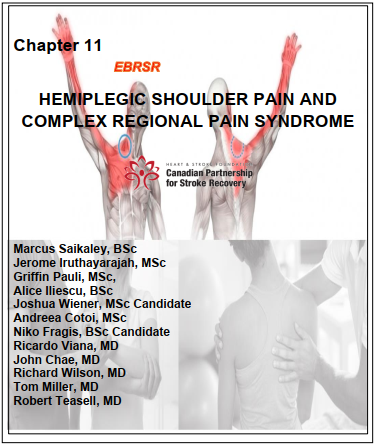Hemiplegic Shoulder Pain & Complex Regional Pain Syndrome
Chapter 11
Shoulder pain resulting from hemiplegia is a common clinical consequence of stroke. Hemiplegic shoulder pain can occur as early as two weeks post-stroke but an onset of two to three months is more typical. Shoulder pain can negatively affect rehabilitation outcomes as good shoulder function is a prerequisite for successful transfers, maintaining balance, effective hand function, and performing activities of daily living. Similarly, complex regional pain syndrome is pervasive in hemiplegic patients and can lead to significant medical complications. This review summarizes the existing literature with regard to hemiplegic shoulder pain after stroke. Topics include prevalence, causes, impact, and management of hemiplegic shoulder pain with in-depth discussion of shoulder subluxation, spasticity, contractures, and rotator cuff disorders. Management techniques including shoulder positioning and related aids, intraarticular and intramuscular injections, electrical stimulation, active physical therapies, and other miscellaneous interventions are addressed. Finally, a discussion of the physiology, incidence, diagnosis, and treatment of complex regional pain syndrome is included.



